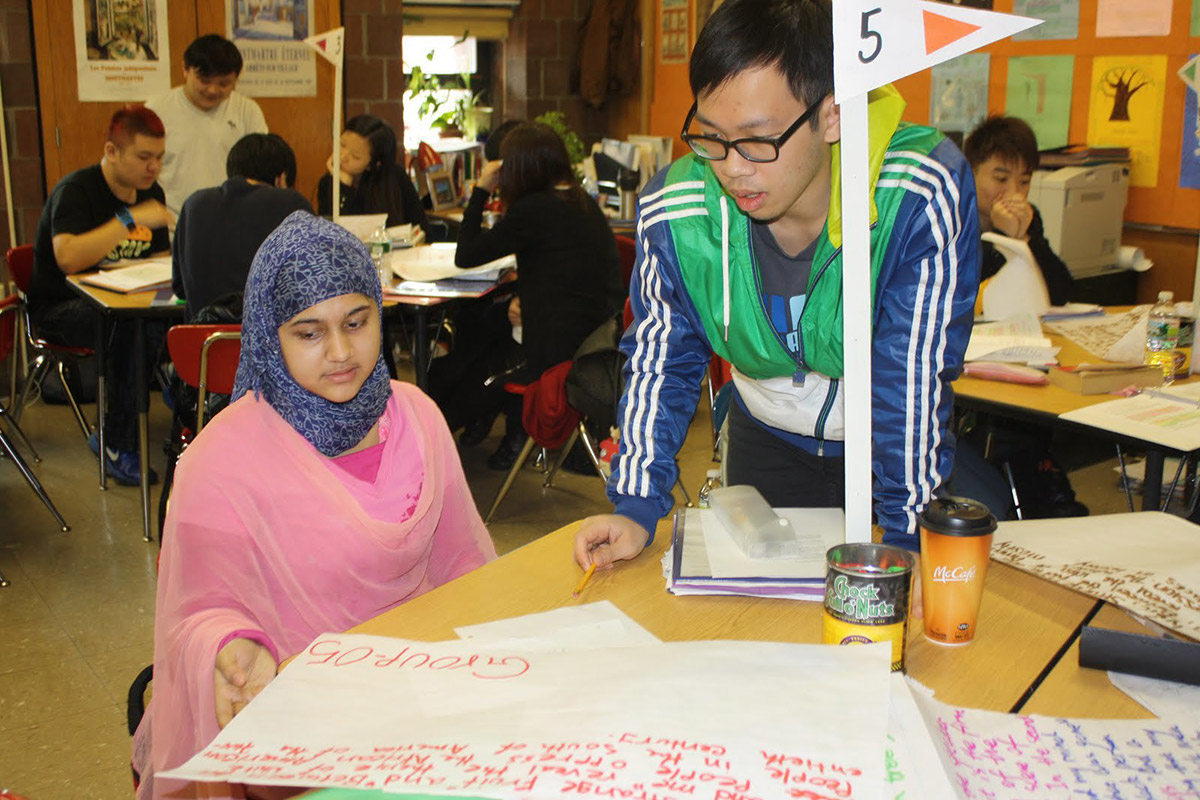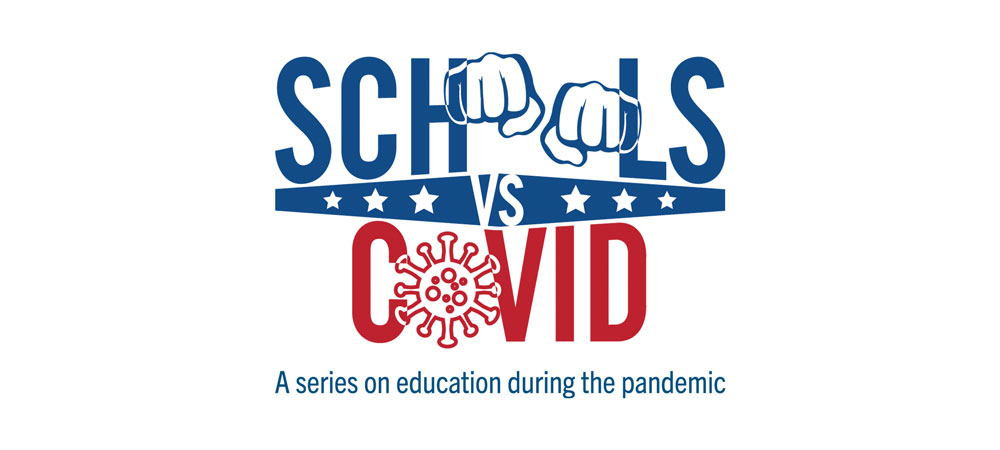Kids in immigrant families in the United States are often bullied, discriminated against and haunted by fear of deportation. That puts them at higher risk for depression, anxiety and, ultimately, suicide — especially during a global pandemic and “with anti-immigrant rhetoric being expressed passionately by many in power,” write Teachers College’s Prerna Arora, Assistant Professor of School Psychology and her co-authors in a paper published this past July in The Journal of Immigrant and Minority Health.
Yet these young people are the least likely to receive psychological and emotional support for these “internalizing disorders” — in part because they and their families don’t seek it out.

BUILDING CAPACITY Prerna Arora, Assistant Professor of School Psychology, is helping schools address depression and anxiety in students from immigrant families. (Photo: TC Archives)
“We know that immigrant-origin youth really need these services, but also that they are least likely to access them,” says Arora, who serves as Vice President for Social, Ethical, and Ethnic Minority Affairs of the Division 16 (School Psychology) of the American Psychological Association. “Why? What’s the cultural context that makes it less likely, and how can we increase their engagement?”
The “why” questions have some obvious answers — stigma around mental health issues in some cultures; therapeutic approaches that don’t necessarily translate across cultural lines; fears relating to confidentiality and undocumented status – but the “how” is more challenging. In part that’s because – odd though it may sound — school psychology hasn’t always directly concerned itself with mental health.
We know that immigrant-origin youth really need these services, but also that they are least likely to access them. Why? What’s the cultural context that makes it less likely, and how can we increase their engagement?
—Prerna Arora, Assistant Professor of School Psychology
“Historically, the focus has been on academic assessments and interventions at the behavioral level aimed at addressing externalizing behavior — rule-breaking, aggression, defiance,” says Arora, who has worked with immigrant and ethnic minority students in Baltimore, Philadelphia and New York City and studied internalizing disorders in youth from Indian, Mexican and Guyanese families. “As a result, most schools don’t have the capacity to help kids who are anxious or depressed.”
Over the past several years, in a body of work that recently won her TC’s Strage Prize for outstanding work by junior faculty, Arora has been working to change that picture by nudging her field toward adopting new methods and broader cultural competence.
[Watch a video on the Strage Prize website about Arora and her work at Lower East Side Prep, a transfer high school in Manhattan that serves a large number of students from Asian and LatinX immigrant families. Read a group of stories, quoting Arora and other TC faculty, about how the COVID crisis has affected K-12 students psychologically and emotionally. Learn more about TC’s Program in School Psychology and Arora’s School Mental Health for Minority Youth and Families (SMILE) Research Lab.]
Historically, the focus has been on academic assessments and interventions at the behavioral level aimed at addressing externalizing behavior – rule-breaking, aggression, defiance. As a result, most schools don’t have the capacity to help kids who are anxious or depressed.
—Prerna Arora, Assistant Professor of School Psychology
For example, in their July paper, titled “A Three‑Tiered Model for Addressing the Mental Health Needs of Immigrant‑Origin Youth in Schools,” Arora, Kiara Alvarez (Harvard Medical School), Cindy Huang (TC Assistant Professor of Counseling Psychology) and Cixin Wang (University of Maryland-College Park College of Education) map out “a whole-school, systemwide approach to integrating services in schools that serve a large proportion of immigrant-origin children.”
“Instead of saying there’s only one way to do it, our model takes various evidence-based approaches and integrates them so that they can be tailored to best address different levels of need,” Arora says. “Many schools use some of these methods, but it tends to be piecemeal.”
“Tier 1 programming,” according to the model, is preventive, targeting all students. Students learn social and emotional skills and may explore their ethnic and racial identities. Schools increase adult support on campus and boost family engagement by establishing welcome centers for immigrant families, empowering parents in these families as leaders and building community partnerships.
Tier 2 targets immigrant youth who are considered at risk. An essential feature: Schools provide mental health “literacy” programs, in which students and families are educated by people they know and trust about the confidentiality of counseling records, the ways that treatment differs from advice offered by family or friends, and the impact of mental health problems on students’ academic achievement.
School psychologists “have an ethical responsibility to engage in social justice and antiracist action,” Arora and others write in a call to action to their field. Their statement calls on practitioners to confront their own “internalized racism and implicit biases” as well as the “explicit biases in preK-12 schools and university training programs.”
Tier Three focuses on immigrant youth with serious mental health issues such as post-traumatic stress disorder (PTSD). Arora and her coauthors cite school-based programs that provide trauma-focused cognitive behavioral therapy, and a project in which “cultural brokers” from Boston’s Somali community help modify services to treat Somali immigrant youth with PTSD.
Providing all of these services will require some adjustments, Arora acknowledges — “but schools don’t have to buy programs, because many good ones are free, and training staff to use them is relatively simple.”
Meanwhile, Arora and other school psychologists are urging their field to make much broader changes. This year, representing a coalition of organizations that includes APA Division 16, the National Association of School Psychologists and the American Board of School Psychology, they issued a “School Psychology Unified Anti-Racism Statement and Call to Action” that begins by listing Trayvon Martin, Eric Garner, Breonna Taylor, George Floyd and “countless other victims of police brutality and racist violence” and asserts that school psychologists “have an ethical responsibility to engage in social justice and antiracist action.”
The statement calls on practitioners to confront their own “internalized racism and implicit biases” as well as the “explicit biases in preK-12 schools and university training programs” and “promise to support and protect our children of color who are disproportionately targeted in our schools and communities.” The authors call for measures that include: the creation of a national library of literature on social justice, equity and inclusion; a mentoring program for early career psychologists and students, especially those of color; recruitment of “diverse voices” in professional organizations and committees; and preparation of school psychologists to conduct public policy advocacy against systemic racism and implicit bias.
“It’s been a very difficult time, but the recent sociopolitical climate has brought everything to the forefront for change,” says Arora. “And I do see a shift going on. We’ve had an increase in the percentage of racial and ethnic minority school psychology students nationally, and more in the faculty, too. That’s the kind of change that endures, because it’s coming from the ground up.”

